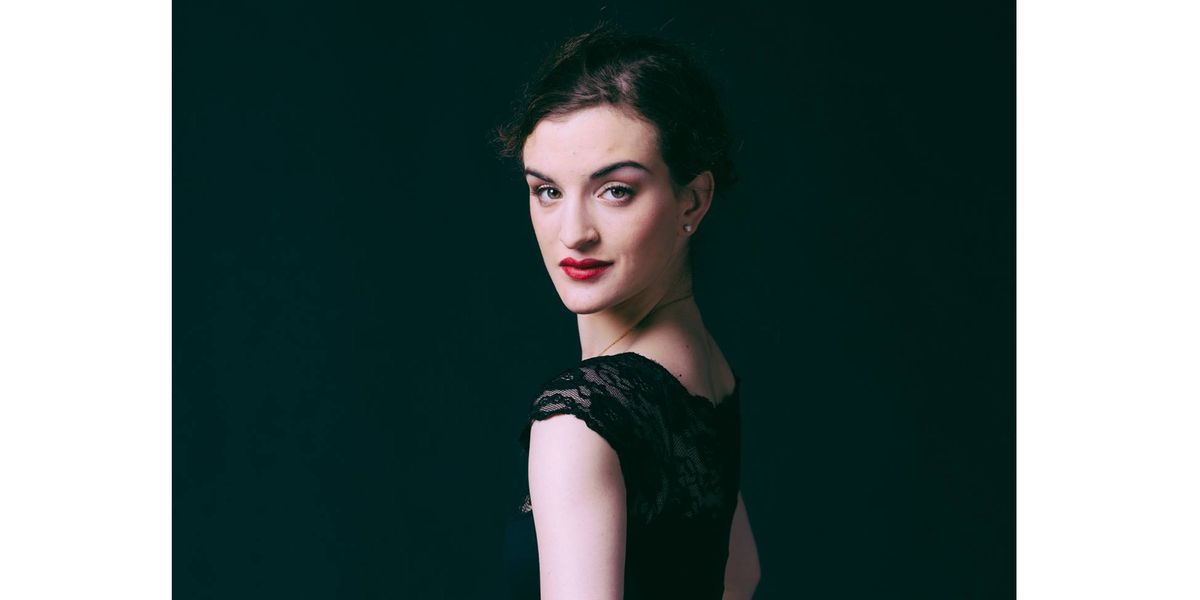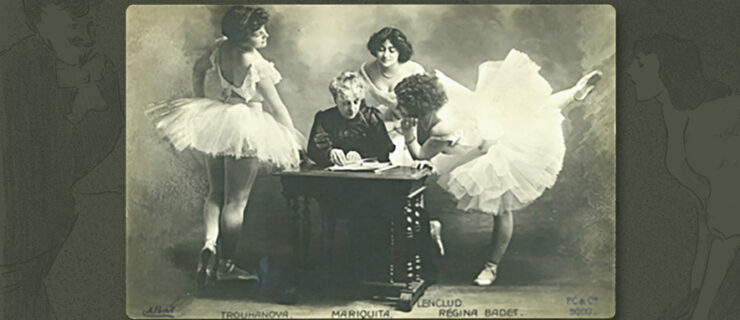Catching Up With Joy Womack on Two Upcoming Films Based on Her Life, Plus How She's Managed in Quarantine
Many ballet films canonize the careers of dancers long retired from the stage. But that’s not the case for Joy Womack, who at just 26 has not one, but two films in the works based on her life. Womack made a splash early on as the first American to graduate from the domestic program of the Bolshoi Ballet Academy in over 60 years, and the first American woman to join the Bolshoi Ballet. After whirlwind careers as a principal with the Kremlin Ballet Theatre of Moscow and South Korea’s Universal Ballet, Womack has just completed her first season as an artist with Boston Ballet.
Both upcoming films cover Womack’s years in Russia. Joy Womack: The White Swan, a documentary made by Dina Burlis and Sergey Gavrilov, debuted at Cannes Marché in June. It is currently in post-production. The second project, Joika, is a feature film directed by James Napier Robertson starring Thomasin McKenzie as Womack. Production has been halted due to the pandemic, but filming is rescheduled to start in early 2021 in New Zealand.
We caught up with Womack in Redding, California, where she’s just relocated with her boyfriend, to hear all about how she’s managing during the coronavirus shutdown, and what it’s been like to imagine her life played out on the big screen.
Your first season with Boston Ballet was cut short due to the pandemic. How have you been managing since then?
It was a hard start to the year, adjusting to the American system and being demoted, since I’m used to working as a principal dancer. I was just starting to get into my stride when everything shut down. I’ve spent the past four months quarantined on a ranch with my boyfriend in the middle of nowhere in New Mexico. About a month ago, my boyfriend needed to move out to Redding. I’ve been able to get back into the studio here, and just helped stage Sleeping Beauty for a local school.
What has it been like having the chance to dance again, after such a long break?
It’s very scary, to see the ruins of your body and technique. I did fouettés for the first time today, and cried. They weren’t the best, but I just had such a feeling of gratitude for having the space to be able to try them.
One thing that’s really challenging about this quarantine is that I hadn’t really realized how much motivation it takes to do something for yourself. It’s so much easier when you’re in a community, or working with a teacher. That’s something I’ve really taken out of this experience: Not taking that time with like-minded people for granted, ever again.
Of the two movies in the works right now,
Joy Womack: The White Swan, the documentary based on your life, is much further along. How did the project first come to be?
My now ex-husband was very good friends with a movie producer, Dina Burlis, who heard about my story and asked me to do an interview. They filmed me for nearly 10 years, from my last year of school up until last year. Coming in to the company from the school and making a rapid rise was very unprecedented, especially for an American. So they decided to capture all of the pressure that I was under, and what was happening in my life. I’m a little nervous for it to come out, because I look at that footage now, and think I’m a much better dancer now and much more settled. They caught me at a very nitty-gritty, formative, kind of ugly-duckling phase in my life.
What was it like being followed by a camera for so many years?
Russia is a country that has a lot of press, so we always had a camera crew or something in the studio. I was used to it. Dina and Sergey were there for big events, like when I had my debut in Swan Lake and then a week later I debuted in Don Quixote, with just two weeks to get ready for both. I got promoted after I danced Swan Lake, and had this imposter syndrome; I felt like I was getting a lot of opportunities that I didn’t deserve. It was a very interesting phase in my life, and in essence it’s a movie about mental health. I sometimes don’t recognize the girl that’s speaking in those interviews.

Alisa Aslanova, Courtesy Womack
Let’s talk about
Joika. When were you first approached about a biopic?
At first it was a Christian movie company that wanted to do a story based on my life as a Christian. Then another company bought it, and finally Anonymous Content renegotiated a deal and sent a writer to follow me. He came to see me perform Swan Lake in Australia, and then followed me around in Los Angeles and I showed him around Moscow. They got me to agree to the film when he insisted that they didn’t want to make a movie about me, but about ballet, and that he wanted it to be very genuine. I was all for that because I think the only way to make ballet more mainstream is to have more of it in Hollywood.
How involved are you in the production process?
I was very involved in the writing process, and I’m hoping to be involved as a consultant when they’re filming. I’d also like to work on the choreography, and potentially as a dance double for Thomasin. For now, I’ve used my network to find her a coach in New Zealand. With COVID, we’ll see what ends up happening.
Many people don’t have these kinds of projects made about them until they’re much further along in their careers. What does it feel like to be starting your new chapter with Boston Ballet, while simultaneously being at the center of this whole other world?
In a way, I haven’t even wanted to think about the films. I think it would be a tragedy if the best part of my life was behind me. It was a really hard time, and now I’m struggling with figuring out what I should do next, how I can dance better, how I can dance more of the things I want to dance, how I can change the dance world in a way that makes it a healthier, safer and more exciting place. It’s been a struggle. But I think there’s a reason that COVID happened, in the sense that I need to reexamine my priorities. There are some exciting things in the works, but I don’t think I’m a ballet dancer in the traditional sense of following any prescribed path. I think my road will be very different going forward.





